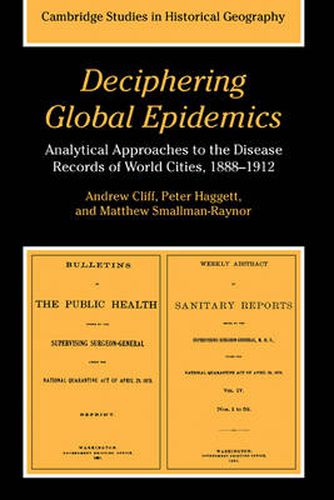Readings Newsletter
Become a Readings Member to make your shopping experience even easier.
Sign in or sign up for free!
You’re not far away from qualifying for FREE standard shipping within Australia
You’ve qualified for FREE standard shipping within Australia
The cart is loading…






Using data collected for 350 cities from around the world, the authors use a variety of analytical methods to provide a global picture of what was happening to infectious epidemic diseases at a critical period in urban evolution on the international stage. The diseases considered are diphtheria, enteric fever, measles, scarlet fever, tuberculosis, and whooping cough. To place the results in a wider time context, other data are used to look both backwards and forwards for nearly a century on either side of the twenty-five-year time window. The book presents a number of results that may be interpreted in the context of current debates on the causes of long-term mortality decline from these infectious diseases. It will be of interest to students of demography, history of medicine, and economic history as well as to researchers already active in these fields.
$9.00 standard shipping within Australia
FREE standard shipping within Australia for orders over $100.00
Express & International shipping calculated at checkout
Using data collected for 350 cities from around the world, the authors use a variety of analytical methods to provide a global picture of what was happening to infectious epidemic diseases at a critical period in urban evolution on the international stage. The diseases considered are diphtheria, enteric fever, measles, scarlet fever, tuberculosis, and whooping cough. To place the results in a wider time context, other data are used to look both backwards and forwards for nearly a century on either side of the twenty-five-year time window. The book presents a number of results that may be interpreted in the context of current debates on the causes of long-term mortality decline from these infectious diseases. It will be of interest to students of demography, history of medicine, and economic history as well as to researchers already active in these fields.